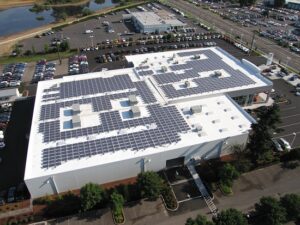We’re here to answer all your questions about solar photovoltaic energy. It wasn’t long ago that solar energy (aka “photovoltaic” or “PV”) was a niche technology. Solar electric used to be limited to remote off-grid applications, or expensive demonstration projects. Now, the renewable energy future technologists have dreamed of has arrived. Over the last two decades, the price of solar energy has dropped to a fraction of the cost, while conversion efficiency has improved a great deal.
To provide an example: In 2006, a 150 watt photovoltaic module may have cost over $1,000 (~$7 / watt). In 2024, a 500 watt module may cost less than $250 (~$0.50 / watt). That’s a 93% discount over a 16 year period! Inverters that change the DC energy from the solar modules into AC energy such as supplied by an electric utility have also dropped in price, while their technology improved. The combination of improving commercially-available technology, and reduction in price is mostly what is responsible for solar energy being a viable energy solution today.
Financial incentives provided by governments and evolving “net metering” policies and incentives from electric utilities have also played a critical role in developing the widespread adoption of solar energy. In general, the incentives are designed to support the industry as it emerges, and slowly reduce incentive levels over time, until the industry is financially viable in the competitive market. ALL sources of energy benefit from government incentives, from fossil fuels, to nuclear energy, to the various renewable energy technologies. One unique aspect of photovoltaic incentives, is that they are often structured to directly pay the system owner. Incentives structured to directly benefit the system owner are a function of “distributed generation” technology.
Today, you can power your house or business with solar energy, you can fuel your electric car (or fleet of electric cars!) with solar energy. Solar energy does NOT require batteries, but as battery technology improves, the possibilities are endless.
See this Department of Energy link to learn about photovoltaic technology: Photovoltaics Basics
See our FAQ Page for more information.

